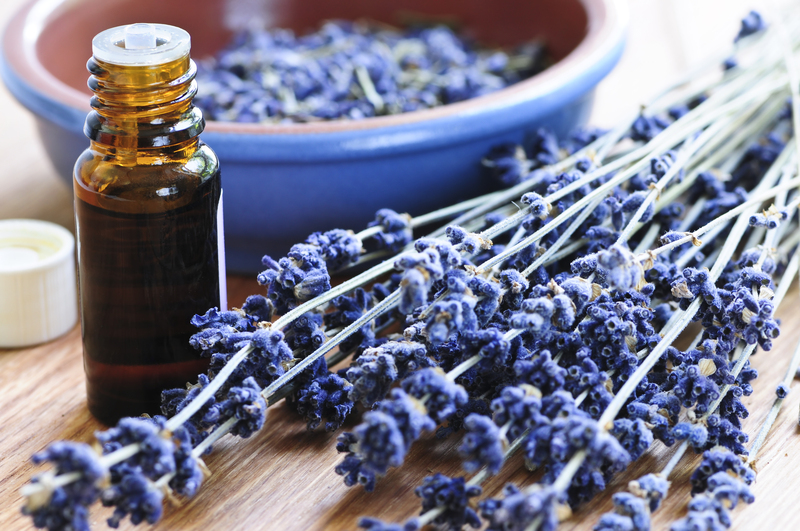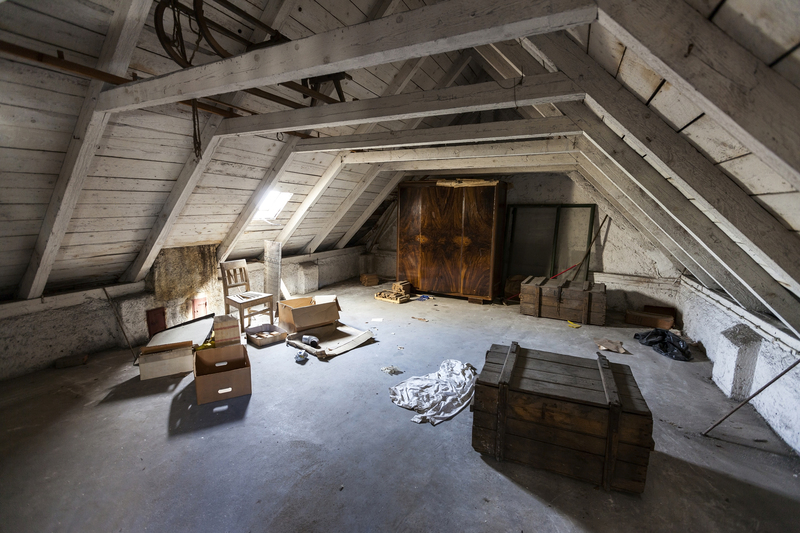Clear Away Mould: Your Window Sills Deserve Better
Posted on 02/10/2025
Clear Away Mould: Your Window Sills Deserve Better
Mould on window sills can be unsightly and hazardous to your health. It's one of the most common household issues, especially in areas of high humidity or poor ventilation. If you're frustrated by black spots or a fuzzy green residue on your window frames, it's time to take action. Clear away mould and give your window sills the care they deserve. In this comprehensive, SEO-optimized article, we'll explain why mould forms, the best practices to remove it, prevention strategies, and why tackling this problem is crucial for your well-being and that of your home.
Why Does Mould Grow on Window Sills?
To effectively clear away mould from window sills, you first need to understand why it appears there in the first place. Mould spores are everywhere, both outside and inside your home, and all they need to thrive is moisture, organic material, and darkness.
- Moisture: Condensation from windows is the leading source. Poor insulation, single-glazed windows, or high humidity rooms like bathrooms and kitchens heighten the problem.
- Organic Matter: Wood (used for most window sills), dust, and dirt provide a perfect food source for mould colonies.
- Inadequate Ventilation: Areas with limited air circulation make it difficult for moisture to evaporate, resulting in dampness.
<_i>Neglecting even a small patch of mould can lead to rapid spreading--not just across your sills, but also onto plaster, curtains, or surrounding furniture. That's why fast, thorough action matters.

Health Risks of Mould on Window Sills - Don't Ignore!
Some homeowners shrug off mould on window sills as merely a cosmetic issue. In truth, even small outbreaks can have consequences:
- Respiratory Problems: Mould spores can trigger asthma, allergies, and respiratory infections, especially in children and seniors.
- Skin and Eye Irritation: Some people are sensitive to mould exposure, leading to rashes, itchy eyes, or headaches.
- Long-Term Health Risks: Prolonged exposure to mould has been linked to chronic sinusitis and in rare cases, more severe reactions.
<_strong>Your window sills deserve better than being a breeding ground for harmful fungi. Regular inspection and rapid cleaning are essential for a healthy home.
Visual Signs: Identifying Mould on Your Window Sills
Not sure if your window sills have mould? Here are some visual cues that signal it's time to clear away mould from your home:
- Black, Green, or Brown Spots: Most common mould species appear as tiny, clustered spots. Black mould (Stachybotrys chartarum) is especially problematic.
- Fuzzy or Slimy Film: Some moulds offer a velvety, fuzzy look, while others are slick and sticky to the touch.
- Persistent Musty Odours: Even if you don't see mould, a lingering musty aroma is a telltale sign of fungal activity.
How to Safely Clear Away Mould from Window Sills
Here's a step-by-step guide to removing mould and restoring your window sills to their original glory. Follow these suggestions for best results:
Step 1: Gather Essential Cleaning Supplies
- Protective gloves and goggles
- Simple mask (to avoid inhaling spores)
- White vinegar or hydrogen peroxide (natural mould killers)
- Baking soda (for scrubbing)
- Spray bottle
- Soft brush or old toothbrush
- Paper towels or disposable cleaning cloths
Step 2: Prep the Area
- Open windows to improve ventilation.
- Remove curtains, blinds, or any porous material near the affected sill (wash or discard if infected).
- Cover the floor with old towels to catch drips or debris.
Step 3: Apply Your Chosen Cleaner
- For light infestations: Mix white vinegar and water (1:1 ratio) in a spray bottle. Spray the area thoroughly and let it sit for at least 30 minutes.
- For persistent mould: Use hydrogen peroxide 3% (apply in a well-ventilated area). Spray directly and wait 10 minutes.
Step 4: Scrub, Wipe, Repeat
- Using a soft brush or toothbrush, gently scrub away mould from the window sill and frame.
- Add a paste of baking soda and water to tough stains, allowing it to sit before scrubbing.
- Wipe the area with a clean, damp cloth, then dry thoroughly.
Step 5: Disinfect and Dry
- Spray one final time with vinegar or hydrogen peroxide to kill any lingering spores.
- Let the window and sill dry completely--you can use a fan or open the window on a sunny day.
Step 6: Dispose of Contaminated Cleaning Materials
- Throw away all used paper towels, sponges, or cloths to prevent re-contamination.
- Remove and launder any soft furnishings exposed to mould.
Home Remedies vs Chemical Cleaners: Which is Better?
You may be tempted by commercial mould removers, but natural remedies can often clear away mould from window sills just as effectively without harsh fumes or environmental impacts.
- White Vinegar: Kills up to 82% of mould species, making it safe, affordable, and eco-friendly.
- Hydrogen Peroxide: Antimicrobial, effective on black mould--you MUST test it on inconspicuous areas first, as it can bleach certain sills.
- Baking Soda: Mild abrasive for scrubbing, neutralizes odours, non-toxic, and kid-safe.
- Commercial Sprays: Useful for severe infestations, but always follow safety instructions. Look for trusted "mould and mildew" labels.
*Always avoid mixing bleach with ammonia or vinegar, as this produces toxic gases!*
Preventing Mould on Window Sills: Your Long-Term Guide
Prevention is always better than cure. After you clear away mould from your window sills, use these tips to stop future outbreaks:
Control Moisture and Humidity
- Use a dehumidifier in rooms prone to dampness.
- Open windows frequently or install trickle vents for airflow.
- Wipe down condensation as soon as it forms.
- Ensure windows are properly sealed to prevent leaks.
Improve Insulation
- Add insulation film or double-glazing to old windows.
- Check caulking regularly and repair any gaps or cracks.
Regular Cleaning Routine
- Dust and wipe window sills weekly to minimize organic matter.
- Clean up spills or plant-water drips immediately.
- Use a preventative spray of vinegar and water every month.
Address Structural Issues
- Repair leaks in the exterior window frame or walls promptly.
- Trim back foliage that may shade and dampen window areas.
When to Call a Professional
If your efforts to clear away window sill mould aren't working--or you notice it spreading into the walls or flooring--call in a qualified mould remediation specialist. Professional help is essential if:
- Mould covers an area larger than a 1m x 1m patch.
- You or anyone in your home experiences sudden or severe allergic reactions.
- The structure is showing signs of rot, warping, or water damage.
_Professional remediation ensures all spores are removed safely and can help you identify leaks or other hidden sources of moisture._
Frequently Asked Questions (FAQ)
How often should I inspect my window sills for mould?
Ideally, check window sills once a week, especially after periods of wet weather or if you've experienced leaks.
Can I just paint over mould to hide it?
No! Painting over mould doesn't solve the problem and can make it worse. Always clean and dry the area thoroughly before any repainting.
Will bleach completely remove window sill mould?
Bleach may lighten the stain but often fails to penetrate porous surfaces, meaning the mould can return. White vinegar or hydrogen peroxide are usually more effective for deep cleaning window sills.
Is window sill mould dangerous for pets?
Yes, both pets and children are vulnerable to mould-related health risks. Keep animals away during cleaning.
Can I prevent mould growth with anti-mould paint?
Anti-mould paint forms a protective coating and can help, but it won't work unless underlying moisture issues are fixed first.

Clear Away Mould: Restore the Value and Beauty of Your Windows
Window sills are more than just a place for flowers or trinkets. They're the frame to your view, offering natural light and shielding your home from the elements. Clearing away mould not only restores their appearance but also protects your family's health and preserves the value of your property.
- Breathe Easier: Reducing mould lowers allergy and asthma risks for everyone at home.
- Protect Your Investment: Routine cleaning and prevention limit the need for costly repairs.
- Boost Your Mood: Fresh, clean window sills brighten every room and enhance your living space.
If you're tired of scrubbing persistent black marks or want a healthier, fresher home, start your anti-mould journey today. With the right prevention and cleaning regimen, you can clear away window mould for good.
Conclusion: Give Your Window Sills the Care They Deserve
Mould on window sills is a problem that's easy to ignore but harder to live with--both for your comfort and your long-term health. With the proactive steps outlined above, you can create an environment where mould struggles to thrive. Don't settle for stained, musty surfaces; your window sills--and your health--deserve better.
Take control, clear away mould, and let your windows shine bright every day!




